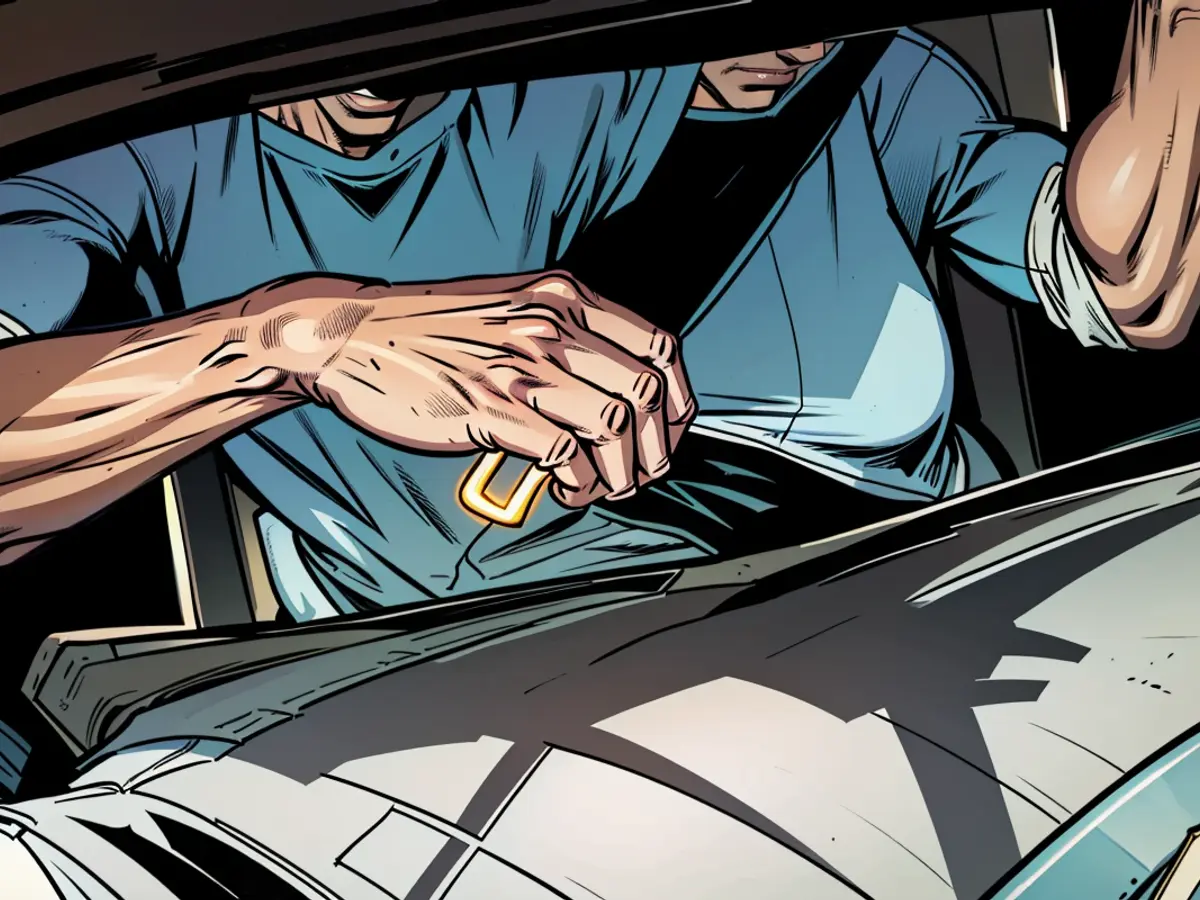- The dispute over security: When fines convinced Belt Muffle
What can the state dictate to people in their own vehicles? This is often a question when it comes to driving. Recently, new cars in the European Union (EU) have had to be equipped with an intelligent speed assistance system. It vibrates, presses, or beeps when the permitted speed is exceeded. Similarly, many passenger cars emit a signal if the driver is not wearing a seatbelt. Today, wearing a seatbelt is self-evident - a few decades ago, it was still the subject of heated debates.
"Wishy-Washy Law": Mandatory since 1976
"Isn't it everyone's own responsibility to ensure their own safety?", describes traffic historian Frank Steinbeck the spirit of the time. There was a fear, for example, that one might not be able to escape from a burning vehicle, explains the traffic expert at the German Museum of Technology in Berlin. In 1975, for instance, the "Spiegel" headlines: "Bound to the car. Seatbelt obligation from January". A year later, the law is introduced in the Federal Republic.
However, the obligation initially only applies to the front seats and is not enforced. The obligation is therefore also described as a "wishy-washy law", so Steinbeck. Campaigns like "Experts wear seatbelts" are started to convince people to wear seatbelts in their cars. Showmaster Frank Elstner promotes safer driving with the TV show "With belt and without flag".
With a fine, the seatbelt rate increases
However, it is only a revision 40 years ago that almost all road users start wearing seatbelts: the introduction of a 40 DM fine on 1 August 1984. "The seatbelt rate rose directly after 1984 to over 90 percent", explains Siegfried Brockmann, managing director for traffic safety and accident research at the Björn Steiger Foundation, which campaigns for improvements in the rescue service.
In particular, the effect is quickly visible in urban areas: data from the Federal Highway Research Institute (BASt) shows that in the year of the introduction of the fine, with a seatbelt rate of 47 percent, more than half of the drivers within a municipality were not wearing a seatbelt. The following year, the figure is 91 percent.
While in 1984 more than 10,000 people still died in traffic accidents in the Federal Republic, the number of fatalities fell to 8,400 the following year, according to the Federal Statistical Office.
In the GDR, the seatbelt becomes mandatory in 1980. "The GDR was naturally partly more rigorous", says traffic historian Steinbeck. "There was no opposition, and there was no press that could have expressed major criticism." Also there, slogans like "Buckle up, save lives" were used. Nevertheless, there were also seatbelt offenders in East Germany, especially in rural areas.
How is the seatbelt obligation viewed today?
In 1970, Steinbeck reports, there were around 23,000 traffic fatalities in West Germany and East Germany combined. In 2023, there are fewer than 3,000 in united Germany, according to the Federal Statistical Office. The rate of seatbelt-wearing drivers is over 98 percent in 2023, according to BASt data. The Federal Ministry of Transport sees general acceptance of the seatbelt obligation.
"Nevertheless, it is the case that every fourth killed car occupant was not wearing a seatbelt", says traffic safety expert Brockmann. This shows how valuable the seatbelt is. Regardless of where you sit in the car: if you are not wearing a seatbelt and are caught, you will currently have to pay 30 euros. In Brockmann's view, this is too little: "That could easily be 100 euros."
In Germany, there are also exceptions. For instance, in the case of so-called door-to-door delivery. People who frequently get out of the vehicle, such as when delivering packages, are not required to wear a seatbelt. The same applies when driving at low speeds, such as when reversing or parking.
Something many people don't know: When driving a car, fluffy jackets and coats should be removed. Thick clothing creates an additional layer that needs to be overcome in a collision before the seatbelt can do its job, explains Brockmann.
New technologies, old patterns of dispute?
Since 2014, all new EU cars have been equipped with a seat belt reminder system. However, Brockmann argues that this system can be easily bypassed with tools. "The industry could actually solve this, if they wanted to," says the expert. The seatbelt buckle could be designed more intelligently, for example, to recognize whether there is actually tension on the belt.
The current criticism of warning signs for speeding is partly due to fears of an indirect speed limit on German motorways. From the perspective of transport historian Steinbeck, this criticism is "resistance to something new that might take away my rights." However, the assistance system can still be turned off at the moment.
The Manufacture of motor vehicles in the EU now includes the installation of an intelligent speed assistance system in new cars. This system alerts the driver when the permitted speed is exceeded.
Similarly, the Manufacture of motor vehicles in the past has seen changes in safety features, such as the introduction of mandatory seatbelt use in vehicles. Initially, this was met with resistance due to fears about escaping from burning vehicles, but campaigns like "Experts wear seatbelts" helped to promote their use.






